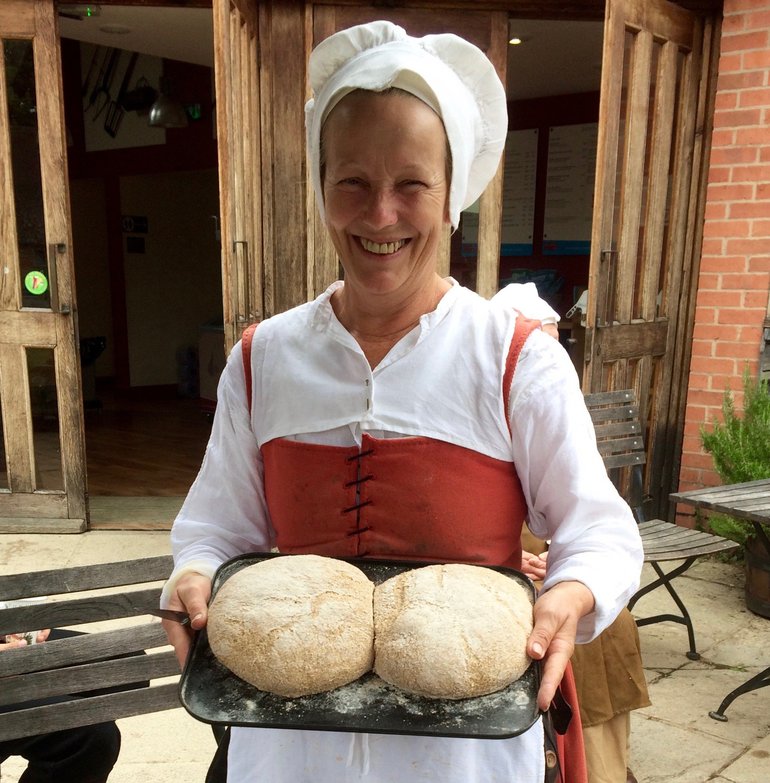
For the first time, this year we have attempted to produce a loaf of bread made from wheat grown on the farm using 16th century techniques.

Spring wheat was planted in the Tudor crop area on the wider farm earlier in the year and, despite the challenging weather, it was ready to harvest in August. Our Tudor farm labourers were sent out to the fields with their scythes and sickles to cut the wheat and stack it into stooks to dry in the sun. Unfortunately, the weather chose that week to break and our stooks were thoroughly soaked, meaning they would take several more weeks to dry out again before they could be brought to the barn for threshing and winnowing. Loath to keep the housemaids waiting, some dry wheat was sneakily brought in as a substitute!

The next stage was to grind the grain into flour with the hand-turned quern stone. Mistress Sarah and our visitors soon discovered this sounds a lot easier than it is. Each batch of grain had to pass through the quern 50 times to grind it fine enough for use, which took a lot of elbow grease and the best part of a day to achieve. The effort was worth it, though, and after a quick sieve, the resulting flour was used to make some very tasty bread. Success!

The whole experiment has been a real insight into Tudor daily life and the amount of effort that went into making such a staple product as flour. To celebrate the end of the harvest, join our Tudors at Mary Arden's Farm on 22 and 23 September for Apple Days. Ever ambitious, next season we hope to see the entire process through from beginning to end (with no cheating) so look out for updates in the spring!

